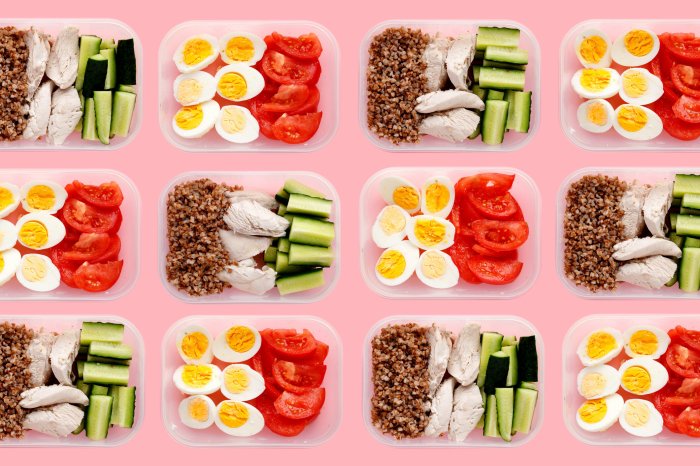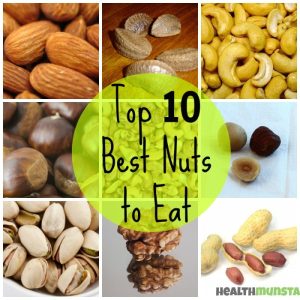
Meal prepping might sound daunting, but it’s a game-changer for those seeking healthier eating habits without sacrificing precious time. Imagine a week filled with delicious, nutritious meals, all prepped and ready to go. This isn’t just about saving time; it’s about taking control of your diet and fostering a more mindful relationship with food. Whether you’re a busy professional, a student juggling classes, or simply looking to simplify your life, meal prepping can be your ultimate ally.
This guide will demystify the world of meal prepping, offering practical tips and easy-to-follow recipes tailored for beginners. We’ll explore everything from planning your weekly menu to mastering essential prepping techniques, ensuring you have the knowledge and confidence to embark on this rewarding journey.
Meal Prepping for Beginners: A Time-Saving Guide to Healthy Eating
Are you tired of constantly deciding what to eat for dinner? Do you find yourself reaching for unhealthy convenience foods when you’re short on time? Meal prepping might be the answer you’ve been looking for! This simple strategy can revolutionize your approach to healthy eating, making it easier than ever to nourish your body and reach your goals.Meal prepping is essentially preparing your meals in advance, whether it’s for the whole week or just a few days.
This helps you save time, make healthier choices, and stick to your budget.
Benefits of Meal Prepping
Meal prepping offers numerous advantages that can significantly improve your eating habits and overall well-being. Here are some key benefits:
- Time-Saving: Imagine having healthy meals ready to go in the fridge, eliminating the stress of cooking every night. Meal prepping allows you to dedicate a few hours on a weekend or an evening to prepare several meals, saving you valuable time during the week.
- Healthier Eating Habits: When you’re meal prepping, you’re in control of the ingredients and portion sizes. This encourages you to choose healthier options and avoid unhealthy temptations. It also helps you make mindful choices about what you’re eating, promoting a more balanced diet.
- Budget-Friendly Meals: Meal prepping can help you stick to your budget. By planning your meals in advance, you can buy groceries in bulk, often at discounted prices. This also reduces the likelihood of impulsive purchases of unhealthy takeout or convenience foods.
Planning Your Meal Prep

Planning your meals in advance is essential for successful meal prepping. It ensures you have a clear idea of what you’ll be eating throughout the week, helps you avoid impulsive unhealthy choices, and makes grocery shopping more efficient.
Choosing Recipes
Choosing recipes that are easy to prepare and store is key to making meal prepping manageable.
- Opt for recipes with minimal ingredients and simple cooking methods. This will save you time and effort in the kitchen.
- Select recipes that can be easily reheated or eaten cold. This allows for flexibility and convenience.
- Choose recipes that can be made in large batches. This allows you to prepare multiple servings at once, saving time and effort.
Sample Weekly Meal Plan
Here’s a sample weekly meal plan with a variety of recipes that are easy to prepare and store:
- Monday: Chicken and Vegetable Stir-Fry
- Tuesday: Lentil Soup
- Wednesday: Salmon with Roasted Vegetables
- Thursday: Quinoa Salad with Grilled Chicken
- Friday: Vegetarian Chili
- Saturday: Leftovers from the week
- Sunday: Breakfast Burritos
Simple and Healthy Recipes
Meal prepping doesn’t have to be complicated or time-consuming. There are many simple and healthy recipes that can be made in advance and enjoyed throughout the week. These recipes are perfect for beginners who are just starting out with meal prepping or for those who are looking for quick and easy options.
Breakfast
Here are some easy and healthy breakfast recipes that you can meal prep:
- Overnight Oats: Overnight oats are a great option for a quick and easy breakfast. They can be made the night before and enjoyed in the morning. Simply combine rolled oats, milk, yogurt, and your favorite toppings in a jar or container. Refrigerate overnight and enjoy in the morning.
- Egg Muffins: Egg muffins are another great option for a quick and easy breakfast. They can be made in advance and reheated in the morning. Simply combine eggs, vegetables, and cheese in a muffin tin and bake until set.
- Smoothies: Smoothies are a great way to get a quick and healthy breakfast on the go. Simply combine your favorite fruits, vegetables, and protein powder in a blender and blend until smooth.
Lunch
Here are some simple and healthy lunch recipes that you can meal prep:
- Salads: Salads are a great option for a light and refreshing lunch. They can be made with a variety of vegetables, fruits, and proteins. To make your salads more filling, add a protein source like chicken, fish, or beans.
- Soup: Soup is another great option for a warm and comforting lunch. It can be made with a variety of vegetables, beans, and lentils. You can also add a protein source like chicken, fish, or tofu.
- Sandwiches: Sandwiches are a quick and easy lunch option. They can be made with a variety of breads, fillings, and toppings. To make your sandwiches healthier, use whole-wheat bread and lean protein sources.
Dinner
Here are some simple and healthy dinner recipes that you can meal prep:
- Chicken and Vegetable Stir-Fry: Chicken and vegetable stir-fry is a quick and easy dinner option. Simply stir-fry chicken, vegetables, and your favorite sauce in a pan. You can serve it over rice or noodles.
- Baked Salmon with Roasted Vegetables: Baked salmon with roasted vegetables is a healthy and flavorful dinner option. Simply bake salmon with your favorite vegetables in the oven. You can serve it with a side of quinoa or brown rice.
- Lentil Soup: Lentil soup is a hearty and healthy dinner option. It can be made with a variety of vegetables and spices. You can also add a protein source like chicken or sausage.
Snacks
Here are some healthy snack ideas that you can meal prep:
- Fruit and Vegetable Sticks: Fruit and vegetable sticks are a healthy and refreshing snack. They can be prepped in advance and stored in a container. You can also add a dip like hummus or yogurt.
- Trail Mix: Trail mix is a great option for a quick and easy snack. It can be made with a variety of nuts, seeds, and dried fruit. You can also add chocolate chips or other healthy ingredients.
- Hard-Boiled Eggs: Hard-boiled eggs are a great source of protein and can be prepped in advance. They can be enjoyed on their own or added to salads and sandwiches.
Meal Prep Tips and Techniques

Meal prepping involves preparing your meals in advance, which can save you time and money, and help you eat healthier. You can prep ingredients, cook meals, or both. By making the most of your time on the weekends, you can have delicious and healthy meals ready to go for the busy week ahead.
Prepping Ingredients in Advance
Prepping ingredients ahead of time can significantly reduce your cooking time during the week. This includes tasks like chopping vegetables, marinating meat, and cooking grains.
- Chop Vegetables: Wash and chop vegetables like onions, peppers, carrots, broccoli, and celery in advance. Store them in airtight containers in the refrigerator for up to 5 days.
- Marinate Meat: Marinating meat not only adds flavor but also helps to tenderize it. Prepare your marinades and let the meat soak in them for at least 2 hours, or even overnight, in the refrigerator.
- Cook Grains: Cook grains like rice, quinoa, or couscous in bulk and store them in the refrigerator for up to 5 days. You can use them as a base for various meals throughout the week.
Storing Meals Properly
Proper storage is crucial for maintaining the freshness and quality of your meal-prepped meals.
- Use Airtight Containers: Store your meals in airtight containers to prevent freezer burn and maintain their freshness. Glass or BPA-free plastic containers are ideal.
- Label and Date: Label each container with the contents and the date of preparation. This helps you keep track of what’s inside and ensures you eat the oldest meals first.
- Refrigerate or Freeze: Refrigerate meals for up to 5 days, or freeze them for longer storage. When freezing, make sure to leave some space in the container for expansion.
Reheating Meals Effectively
Reheating meal-prepped meals should be done carefully to preserve their flavor and texture.
- Microwave: For quick reheating, use a microwave. Cover the container with a lid or plastic wrap to prevent splattering. Heat in intervals, stirring occasionally, to ensure even cooking.
- Oven: For a more even and flavorful reheating, use an oven. Preheat the oven to 350°F (175°C). Transfer the meal to an oven-safe dish, cover it with foil, and bake for 20-30 minutes, or until heated through.
- Stovetop: For reheating soups or stews, use a stovetop. Transfer the meal to a saucepan, heat over medium heat, and stir occasionally until heated through.
Budget-Friendly Meal Prep
Meal prepping doesn’t have to break the bank. With a little planning and smart shopping, you can create delicious and healthy meals without spending a fortune.
Finding Affordable Ingredients
- Shop in season: Fruits and vegetables are most affordable when they’re in season. Look for seasonal produce at your local farmers’ markets or grocery stores.
- Buy in bulk: If you have the space, consider buying staples like rice, beans, lentils, and oats in bulk. These items often have lower prices per unit when purchased in larger quantities.
- Choose generic brands: Generic brands are often just as good as name-brand products but cost significantly less.
- Utilize frozen foods: Frozen fruits, vegetables, and even meats can be just as nutritious as fresh options and often have a longer shelf life.
- Take advantage of sales and coupons: Keep an eye out for weekly sales and use coupons to save on your grocery bill.
Maximizing Ingredient Use
- Plan your meals around a few key ingredients: This will help you reduce food waste and make the most of your purchases. For example, a single batch of cooked chicken can be used in multiple meals throughout the week.
- Get creative with leftovers: Don’t throw away leftover ingredients. Repurpose them into new dishes, such as using leftover roasted vegetables in a salad or soup.
- Cook in bulk: Cooking larger batches of food at once can save you time and energy in the long run. You can freeze portions for later use.
Budget-Friendly Meal Prep Recipes
- Lentil soup: Lentils are a budget-friendly source of protein and fiber. This hearty soup can be made with a variety of vegetables and spices.
- Chicken and vegetable stir-fry: Chicken breast and frozen vegetables are affordable ingredients for a quick and easy stir-fry.
- Black bean burritos: Black beans are a great source of protein and fiber. These burritos can be made with a variety of toppings, such as salsa, avocado, and rice.
- Pasta salad: Pasta is a versatile and affordable ingredient. You can make a delicious and healthy pasta salad with vegetables, beans, and a light dressing.
- Overnight oats: Oats are a budget-friendly and nutritious breakfast option. Overnight oats can be made with milk, yogurt, and your favorite toppings.
Healthy Meal Prep for Different Dietary Needs
Meal prepping can be a fantastic way to save time and eat healthier, but it can be tricky if you have specific dietary needs. This section will explore how to adapt meal prep for common dietary restrictions, such as vegetarian, vegan, gluten-free, and dairy-free. We’ll provide recipe ideas, tips, and resources to help you make healthy and delicious meals that meet your individual needs.
Adapting Meal Prep for Various Dietary Needs
Meal prepping can be easily tailored to various dietary needs, ensuring you enjoy delicious and nutritious meals without sacrificing your dietary preferences.
| Dietary Need | Recipe Ideas | Tips | Resources |
|---|---|---|---|
| Vegetarian |
|
|
|
| Vegan |
|
|
|
| Gluten-Free |
|
|
|
| Dairy-Free |
|
|
|
Food and Related Products
Meal prepping is all about planning and preparing your meals in advance. While the focus is on the main ingredients, incorporating a variety of food and related products can elevate your meal prep game, making it more flavorful, nutritious, and convenient.Food and related products can significantly enhance your meal prep experience by adding flavor, texture, and nutritional value to your dishes.
These products can be used to create diverse flavors and textures, making your meals more appealing and satisfying.
Flavor Enhancers
Flavor enhancers are a key component of meal prepping, adding depth and complexity to your dishes. These products can transform simple ingredients into flavorful meals.
- Herbs and Spices: Herbs and spices are essential for adding flavor and aroma to your meals. They can be used fresh, dried, or in the form of pastes or powders. Common examples include garlic powder, onion powder, paprika, cumin, oregano, thyme, rosemary, and basil.
- Sauces and Marinades: Sauces and marinades are great for adding flavor and moisture to your meals. They can be homemade or store-bought. Popular options include soy sauce, teriyaki sauce, barbecue sauce, pesto, and vinaigrette.
- Vinegars and Oils: Vinegars and oils are essential for adding acidity and richness to your meals. They can be used in dressings, marinades, and sauces. Popular options include balsamic vinegar, apple cider vinegar, olive oil, avocado oil, and sesame oil.
- Flavor Extracts: Flavor extracts, such as vanilla extract, almond extract, and lemon extract, can add a touch of sweetness and aroma to your meals.
Texture Enhancers
Texture is an important aspect of any meal. Texture enhancers can add variety and interest to your dishes, making them more appealing and enjoyable.
- Nuts and Seeds: Nuts and seeds are a great source of healthy fats, protein, and fiber. They can add crunch and texture to your meals. Popular options include almonds, walnuts, pumpkin seeds, sunflower seeds, and chia seeds.
- Dried Fruits: Dried fruits, such as cranberries, raisins, apricots, and dates, can add sweetness and chewiness to your meals.
- Vegetables: Vegetables can add a variety of textures to your meals, from crisp and crunchy to soft and tender. Popular options include broccoli, carrots, bell peppers, spinach, and mushrooms.
Nutritional Boosters
Nutritional boosters are essential for making your meal prep healthy and fulfilling. These products can add essential vitamins, minerals, and antioxidants to your dishes.
- Protein Powders: Protein powders are a convenient way to increase the protein content of your meals. They can be added to smoothies, yogurt, or oatmeal. Popular options include whey protein, casein protein, and soy protein.
- Superfoods: Superfoods are nutrient-rich foods that offer a variety of health benefits. Popular options include chia seeds, flax seeds, goji berries, acai berries, and spirulina.
- Sprouts: Sprouts are a great source of vitamins, minerals, and enzymes. They can be added to salads, sandwiches, or stir-fries.
Product Creation
Creating food products specifically designed for meal prepping can be a lucrative endeavor. By understanding the needs and desires of meal-prepping enthusiasts, you can develop innovative and marketable products that simplify and enhance their healthy eating journey.
Product Development Process
The journey from a food product idea to a successful launch requires a structured approach.
- Ideation: The process begins with identifying a gap in the market or a need that existing meal prep products fail to address. This could involve brainstorming innovative flavors, convenient formats, or functional ingredients that cater to specific dietary needs or preferences.
- Research and Development: Thorough market research is crucial to validate your product idea. Analyze competitor offerings, consumer preferences, and market trends to ensure your product is unique and resonates with your target audience. Develop prototypes and conduct taste tests to refine your product’s recipe and packaging.
- Production and Packaging: Select a reliable manufacturing partner and establish efficient production processes. The packaging should be attractive, functional, and compliant with food safety regulations. Consider eco-friendly packaging options to appeal to environmentally conscious consumers.
- Marketing and Launch: Develop a comprehensive marketing strategy to create awareness and generate excitement for your product. Leverage social media, influencer marketing, and targeted advertising to reach your target audience. Partner with meal prep companies or bloggers to showcase your product and its benefits.
Creating Innovative and Marketable Food Products
To stand out in the crowded food market, your meal prep product needs to be innovative and appealing to consumers. Here are some tips:
- Focus on Convenience: Meal prepping is all about saving time and effort. Offer products that are easy to prepare, such as pre-portioned ingredients, ready-to-heat meals, or convenient snack packs.
- Embrace Flavor and Variety: Offer a range of flavors and options to cater to diverse taste preferences. Consider incorporating seasonal ingredients, ethnic flavors, or unique flavor combinations to make your product stand out.
- Prioritize Health and Nutrition: Meal prep is often associated with healthy eating. Highlight the nutritional benefits of your product, such as high protein content, fiber-rich ingredients, or low-calorie options. Consider catering to specific dietary needs, such as gluten-free, vegan, or keto-friendly options.
- Sustainability and Ethical Sourcing: Consumers are increasingly conscious of environmental and ethical practices. Use sustainable packaging materials, source ingredients ethically, and highlight your commitment to responsible food production.
Bed and Breakfast Inns
Bed and breakfast inns, known for their cozy atmosphere and personalized service, can significantly benefit from incorporating meal prepping into their operations. Meal prepping allows these establishments to streamline their kitchen processes, improve efficiency, and offer guests a more consistent and enjoyable dining experience.
The Role of Meal Prep in Bed and Breakfast Inns
Meal prepping plays a crucial role in enhancing the overall guest experience at bed and breakfast inns. It allows inns to provide guests with fresh, high-quality meals while minimizing the time spent in the kitchen, enabling staff to focus on other aspects of hospitality.
- Streamlined Kitchen Operations: Meal prepping helps organize and optimize kitchen operations, reducing the time spent on repetitive tasks and allowing staff to focus on more complex meal preparations.
- Consistent Quality: Prepping ingredients and portions in advance ensures consistent quality and flavor in meals served to guests. This consistency contributes to a positive dining experience.
- Enhanced Efficiency: By preparing components of meals in advance, bed and breakfast inns can reduce the time required to prepare and serve meals, freeing up staff for other tasks like guest interactions or housekeeping.
- Reduced Food Waste: Meal prepping allows for precise portioning and minimizes the risk of food waste, contributing to sustainability and cost-effectiveness.
Utilizing Meal Prepping to Enhance Offerings
Bed and breakfast inns can leverage meal prepping to enhance their offerings in various ways.
- Breakfast Buffets: Inns can offer elaborate breakfast buffets with a variety of prepped components, including fruit salads, yogurt parfaits, and baked goods, allowing guests to personalize their breakfast experience.
- Dinner Packages: Offering pre-prepared dinner packages with options like gourmet salads, pasta dishes, or hearty soups can provide guests with a convenient and delicious dining experience.
- Special Dietary Needs: Meal prepping can be tailored to accommodate guests with specific dietary needs, such as gluten-free, vegan, or vegetarian options, ensuring everyone enjoys a satisfying meal.
- Themed Meal Experiences: Inns can utilize meal prepping to create unique themed dining experiences, such as a “Farm-to-Table” dinner featuring locally sourced ingredients or a “Mediterranean Feast” with flavorful Mediterranean dishes.
Successful Bed and Breakfast Inns Incorporating Meal Prepping
Numerous bed and breakfast inns have successfully incorporated meal prepping into their operations, leading to improved efficiency and enhanced guest satisfaction.
- The Inn at Pleasant Lake, Maine: This charming inn offers a daily breakfast buffet with prepped components like fresh fruit, yogurt parfaits, and baked goods, providing guests with a variety of choices. They also offer pre-prepared dinner packages featuring locally sourced ingredients.
- The Old Mill Inn, Vermont: This historic inn utilizes meal prepping to offer guests a consistent and high-quality dining experience. They prepare components of their signature dishes in advance, ensuring timely and flavorful meals.
- The Rose Garden Inn, California: This luxurious inn offers a range of pre-prepared meals, including gourmet salads, pasta dishes, and vegetarian options, catering to guests’ diverse dietary needs. They also offer themed dinner packages, such as a “California Wine Country Feast” with locally sourced ingredients.
Cooking and Culinary
Meal prepping and cooking are intrinsically linked, forming the foundation of culinary arts. Meal prepping is not just about preparing food in advance; it’s a valuable tool that enhances your culinary skills and deepens your understanding of food. By incorporating meal prepping into your cooking routine, you’ll develop a more profound appreciation for the culinary world.
Improving Cooking Skills Through Meal Prepping
Meal prepping provides a structured environment for honing your cooking skills. The repetitive nature of preparing multiple portions encourages you to refine your techniques and explore different methods. It also allows you to experiment with various recipes and ingredients, expanding your culinary repertoire.
- Mastering Basic Techniques: Meal prepping often involves basic cooking techniques like chopping, sautéing, roasting, and steaming. By consistently practicing these techniques, you’ll become more efficient and confident in the kitchen.
- Developing Flavor Profiles: Experimenting with different spices, herbs, and marinades while meal prepping helps you understand how flavors interact and develop. You’ll learn to create balanced and flavorful dishes, enhancing your culinary knowledge.
- Time Management and Efficiency: Meal prepping teaches you to plan and manage your time effectively in the kitchen. You’ll learn to prioritize tasks, multitask, and utilize your time efficiently, making cooking less stressful and more enjoyable.
Integrating Meal Prepping into Culinary Education
Meal prepping can be seamlessly integrated into culinary education programs. It offers practical hands-on experience, reinforces theoretical concepts, and provides a platform for creativity and innovation.
- Practical Application of Culinary Skills: Meal prepping provides students with a real-world context to apply the culinary skills they learn in the classroom. They can practice techniques, experiment with recipes, and understand the importance of portion control and food safety.
- Developing Time Management and Organization Skills: Meal prepping emphasizes planning, organization, and time management, essential skills for any aspiring chef or culinary professional. Students learn to prioritize tasks, work efficiently, and manage their time effectively.
- Promoting Creativity and Innovation: Meal prepping encourages students to think outside the box and explore different culinary possibilities. They can experiment with various ingredients, flavors, and presentation techniques, developing their creativity and innovation in the kitchen.
Meal prepping isn’t just about creating healthy meals; it’s about empowering you to make conscious choices that nourish your body and mind. With a little planning and preparation, you can unlock a world of culinary possibilities while embracing a healthier lifestyle. So, roll up your sleeves, grab your favorite recipe book, and get ready to transform your week with the magic of meal prepping.
Question & Answer Hub
What are the best containers for meal prepping?
Glass containers are generally the most recommended as they are microwave and dishwasher safe and don’t leach chemicals into your food. However, reusable plastic containers are also a good option if you’re looking for something more budget-friendly.
How long can I store prepped meals in the refrigerator?
Most prepped meals can last in the refrigerator for 3-5 days, but it’s always best to check the specific recipe for storage recommendations. For longer storage, you can freeze some meals.
What if I don’t like the recipes I’ve chosen?
Don’t be afraid to experiment! There are countless meal prep recipes available online and in cookbooks. Feel free to swap ingredients or try different recipes until you find what you enjoy.






